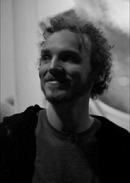 In this thesis spin and charge carried by holes (typified as the absence of a single electrons) in quantum dots, is investigated. ‘We explored the origin of defects in quantum dot formation, coming about by either disorder or issues arising in fabrication,’ Paul-Christiaan Spruijtenburg says. ‘Also we devised methods of eliminating them.’
In this thesis spin and charge carried by holes (typified as the absence of a single electrons) in quantum dots, is investigated. ‘We explored the origin of defects in quantum dot formation, coming about by either disorder or issues arising in fabrication,’ Paul-Christiaan Spruijtenburg says. ‘Also we devised methods of eliminating them.’
First relevant theoretical concepts governing quantum dot transport measurements were put in order. ‘During the project we discovered the entire heterostructure in creating electrostatically defined quantum dots, should be examined,’ Chris tells. ‘Controlling dewetting at higher temperatures proved to be crucial in passivating defects at Si/SiO2 interfaces.’
It proved possible to make a hole quantum dot in intrinsic silicon. ‘However, silicon is known for being extremely sensitive to disorder,’ Chris says. ‘Using Al2O3 atomic-layer deposition, the majority of electrically active defects could be passivated.’
From this knowledge, low-disorder devices were fabricated. A proof of principle of a single-layer depletion-mode hole quantum dot, was demonstrated. A double-quantum dot regime could be tuned and proved ‘extremely stable’. Chris concludes: ‘Holes are promising candidates for quantum computing, but several hurdles have to be overcome to exploit their properties. Switching to a different insulator material seems requisite and feasible, Si/SiGe being a good candidate.’
As one of his most distinct thesis propositions, Chris Spruijtenburg mentions Si/SiO2 interfaces to be unsuitable for future, scalable quantum computing. ‘At these interfaces dangling bonds are present endangering the fabrication process of high-quality holes in quantum dots,’ he says. ‘Thousands of such qubits are required for finally realizing scalable quantum computing.’
Well-equipped
In Twente, notably at the Nanoelectronics Group, Chris reckons the scientists to play a key role worldwide, to investigate the technical details and phenomena actually taking place in the nano fabrication processes involved. ‘We are well-equipped to cover a wide range of relevant nano-structures,’ he says. ‘For example electron beam lithography and atomic layer deposition enable us to do so. Having more fundamental insight in the main bottlenecks of fabrication processes, companies such as ASML can learn to design clever upscaling fabrication processes, using mask lithography.’
Nanolab
Chris enjoyed being part of Mesa+, as an intensive user of the Nanolab. ‘I feel very much at home there,’ he says. ‘Already as a master student, I was using several facilities and equipment, then located next to the Hogekamp building still.’
He was actively involved in moving from there to the current Nanolab. Chris: ‘I fully identify with the Nanolab and Mesa+ activities such as the Mesa+ Days. But most of all, I value the special team spirit in the Nanoelectronics Group. The warm and nice informal atmosphere, together with the substantive involvement of my colleagues, were inspirational throughout the entire PhD project. I am convinced good research partners are decisive in achieving scientific results. From my supervisor, dr. ir. Floris Zwanenburg, I learned to work in a more structured way, always applying a holistic perspective on the research field.’
Future plans
As to his future plans, Chris is not completely sure yet. Although he finds academic research appealing, he sees the amount of time needed for writing grant proposals as a discouraging factor.
‘Unfortunately, academic research is structured this way nowadays,’ he says. ‘I am also attracted towards more practical research subjects, aimed towards applying physics in societal and local problem areas. I hope to contribute to these issues, perhaps as an entrepreneur myself, however idealistic it may seem at first glance.’
QUOTES
At the Nanoelectronics Group, we are well-equipped to cover a wide range of relevant nano-structures.
Having more fundamental insight in the main bottlenecks of fabrication processes, companies such as ASML can learn to design clever upscaling fabrication processes, using mask lithography.
From my supervisor, dr. ir. Floris Zwanenburg, I learned to work in a more structured way, always applying a holistic perspective on the research field.
Next to performing academic research, I am attracted towards more practical research subjects, aimed towards applying physics in societal and local problem areas.
